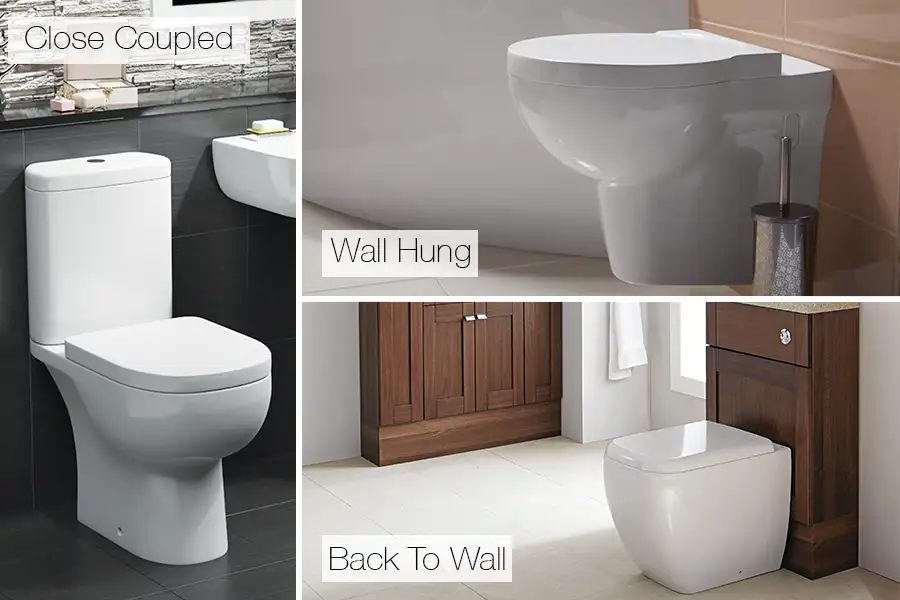In the realm of home essentials, few items are as crucial as the humble toilet. With a plethora of options available in the market, choosing the right toilet for your needs can be a daunting task. This comprehensive guide aims to simplify the decision-making process, exploring various types of toilets and their features to help you make an informed choice.
Understanding Your Space:
Before delving into the vast array of toilet options, it’s crucial to assess your bathroom space. Consider the size, layout, and plumbing configuration, as these factors will profoundly influence the type of toilet that best fits your needs.
Measure the available space to ensure compatibility with your chosen toilet model.
Two-Piece vs. One-Piece Toilets:
Two-piece and one-piece toilets represent two primary design options. Two-piece toilets have a separate tank and bowl, allowing for easier transportation and potentially lower replacement costs.
On the other hand, one-piece toilets integrate the tank and bowl into a single unit, providing a sleeker appearance and often easier cleaning. Compare their pros and cons to find the design that suits your preferences and cleaning habits.
Flush Power and Water Efficiency:
Explore the various flushing mechanisms available in toilets, including gravity, pressure-assisted, and dual flush systems. Evaluate their flushing power and water efficiency to strike a balance between performance and conservation.
Dual flush toilets, for example, offer the highest water efficiency, allowing users to choose between a partial flush for liquid waste and a full flush for solid waste.
Bowl Shape Matters:
Decide between elongated and round bowl shapes. Elongated bowls provide extra comfort due to their extended shape, but they may require more space. Conversely, round bowls are space-efficient but might be less comfortable for some users.
Consider your bathroom layout and personal preferences when making this decision.
Height Considerations:
Toilets come in different heights, and choosing the right one can significantly impact comfort and accessibility. Standard height toilets are more traditional, while comfort height toilets are taller, catering to individuals with mobility concerns or those who prefer a higher seating position.
Ensure the chosen height aligns with the needs of all users in your household.
Bowl Cleaning Innovations:
Stay abreast of cutting-edge technologies designed to simplify toilet cleaning. Rimless designs, for instance, eliminate the traditional rim where bacteria can accumulate.
Glazing options can also make cleaning more manageable, contributing to a hygienic bathroom environment.
Consider these features to reduce maintenance efforts and enhance overall cleanliness.
Material Matters:
Explore the materials used in toilet construction, such as porcelain and vitreous china. Understand their durability, ease of maintenance, and aesthetic appeal to make an informed decision based on your preferences and budget.
High-quality materials contribute to the longevity and performance of your toilet.
Specialty Toilets for Unique Needs:
Discover specialty toilets designed for specific needs. Wall-mounted toilets provide a modern, space-saving look, making them suitable for contemporary bathrooms.
Corner toilets are crafted for compact spaces, maximizing the available room. Bidet-equipped toilets offer enhanced personal hygiene options. Evaluate these options based on your unique requirements.
Installation Factors:
Consider the ease of installation, especially if you plan to do it yourself. Some toilets come with user-friendly features that simplify the installation process, while others may require professional assistance.
Factor in installation costs and requirements when making your final decision.
FAQs:
Q1: What is the most water-efficient toilet option?
A: Dual flush toilets offer the highest water efficiency, allowing users to choose between a partial flush for liquid waste and a full flush for solid waste.
Q2: Are one-piece toilets more expensive than two-piece toilets?
A: Generally, one-piece toilets tend to be more expensive than two-piece toilets due to their sleek design and ease of maintenance.
Q3: How do I determine the right bowl shape for my bathroom?
A: Consider the available space and personal comfort preferences. Elongated bowls offer extra comfort but may require more room, while round bowls are space-efficient.
Q4: Can I install a wall-mounted toilet in any bathroom?
A: Wall-mounted toilets require a special installation process involving an in-wall carrier system, making them more suitable for new construction or extensive bathroom renovations.
Q5: Do comfort height toilets meet accessibility standards?
A: Yes, comfort height toilets are designed to meet ADA (Americans with Disabilities Act) standards, providing a more accessible option for individuals with mobility challenges.
Q6: How do rimless toilets improve cleanliness?
A: Rimless toilets lack the traditional rim where bacteria can accumulate. This design makes cleaning more efficient and contributes to a more hygienic bathroom environment.
Q7: Are bidet-equipped toilets difficult to maintain?
A: Bidet-equipped toilets are designed for ease of use and maintenance. Many models feature self-cleaning functions and removable bidet seats for simple cleaning.
Conclusion:
Selecting the right toilet involves a careful consideration of your space, preferences, and lifestyle. By understanding the various types and features available, you can make an informed decision that aligns with both practical and aesthetic considerations, ensuring your throne is both functional and comfortable. Remember, a well-chosen toilet is an investment in your daily comfort and the overall functionality of your bathroom space.

A group of home improvement enthusiasts and bathroom design experts, combines in-depth knowledge and a shared passion to deliver engaging, informative content that guides readers through the world of bathroom innovation and style.

Leave a Reply